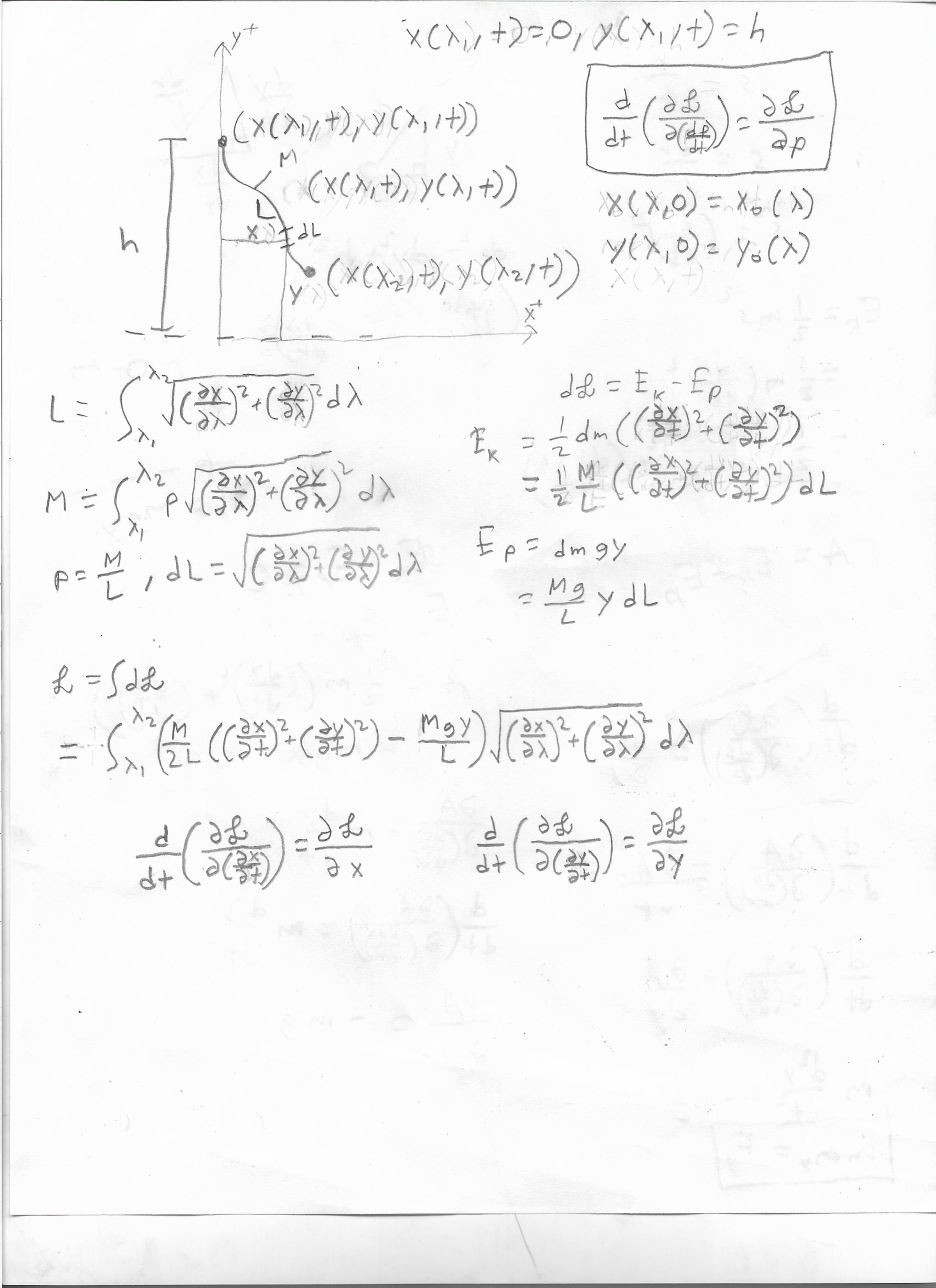Lagrangian of Swinging Rope
Hi Brilliant. Today I decided to use the lagrangian to find the equations of motion for a swinging rope. I am now a bit unsure how I take the partial of the lagrangian with respect to the partials of x and y. Help would be appreciated!

No vote yet
1 vote
Easy Math Editor
This discussion board is a place to discuss our Daily Challenges and the math and science related to those challenges. Explanations are more than just a solution — they should explain the steps and thinking strategies that you used to obtain the solution. Comments should further the discussion of math and science.
When posting on Brilliant:
*italics*or_italics_**bold**or__bold__paragraph 1
paragraph 2
[example link](https://brilliant.org)> This is a quote# I indented these lines # 4 spaces, and now they show # up as a code block. print "hello world"\(...\)or\[...\]to ensure proper formatting.2 \times 32^{34}a_{i-1}\frac{2}{3}\sqrt{2}\sum_{i=1}^3\sin \theta\boxed{123}Comments
Hmm... swinging ropes are indeed very interesting. The equation of motion of an n-pendulum where n tends to infinity will be that of a swinging rope. Your approach is fine. Try to attempt it by generalising equations of motion for an n-pendulum. That's an alternative method. Otherwise, I see no error in yours.
This sort of problem is quite difficult to do analytically using pure mathematics. Most people find an equation for one mass element at a time when simulating. This kind of thing would be good for a simulation.
Generally, computers would numerically compute the integral for the Lagrangian above and numerically solve the Euler-Lagrange equations, or just use Newton's laws. That's been done loads of times in physics engines for swinging ropes in video games.
The integral is very difficult to solve by hand.